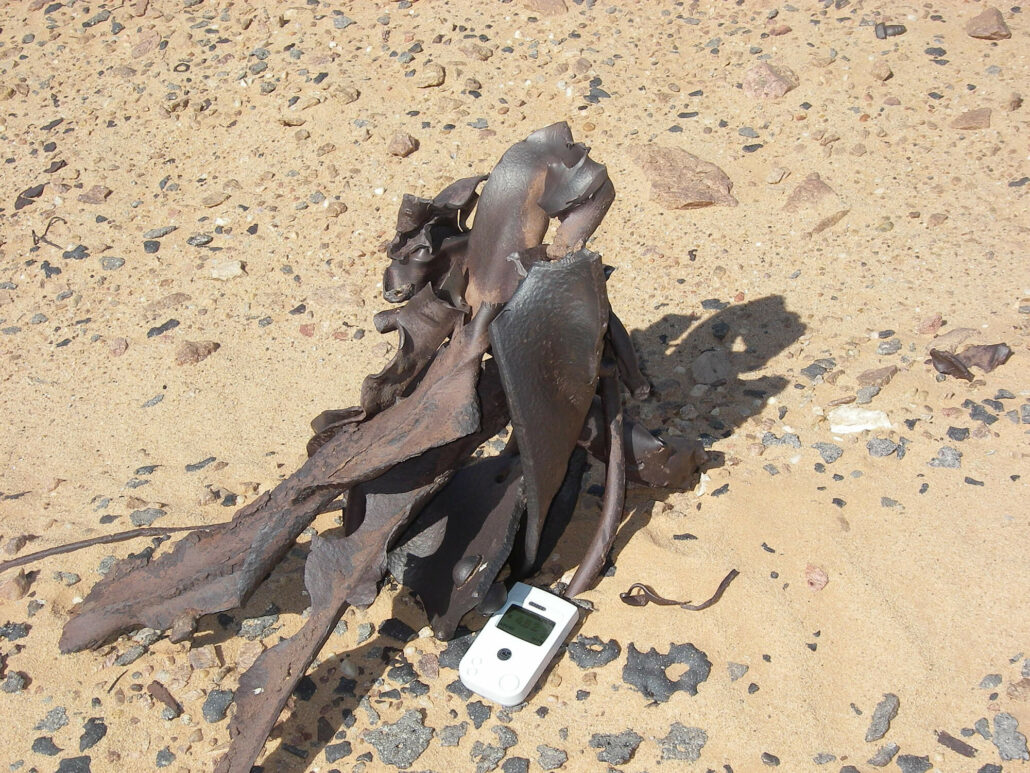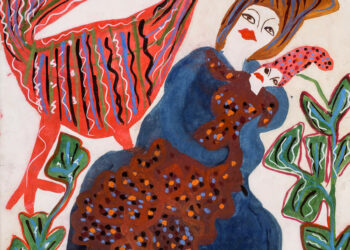Framer Framed presents the exhibition ‘Performing Colonial Toxicity‘ by researcher and architectural historian Samia Henni, in collaboration with If I Can’t Dance, I Don’t Want To Be Part Of Your Revolution.

Photographs by Bruno Barrillot, the co-founder of the Observatoire des armements in Lyon, France. The images were taken during a visit to France’s nuclear sites in Reggane and In Ekker in the Algerian Sahara, with the filmmaker Larbi Benchiha and his team in November 2007. Courtesy Observatoire des armements (www.obsarm.org).
The project sheds light on the redacted history of French nuclear colonialism in the Algerian Sahara and draws attention to the urgency of reckoning with this history and its lived environmental and sociopolitical impacts.
Between 1960 and 1966, the French colonial regime detonated four atmospheric atomic bombs, thirteen underground nuclear bombs and conducted other nuclear experiments in the Algerian Sahara, whose natural resources were being extracted in the process. This secret nuclear weapons programme occurred during and after the Algerian Revolution, or the Algerian War of Independence (1954–62). The resulting toxification of the Sahara spread radioactive fallout across Algeria, North, Central and West Africa, and the Mediterranean (including Southern Europe), causing irreversible and still ongoing contaminations of living bodies, cells and particles, as well as in the natural and built environments. Because the archives of the French nuclear programme remain closed over fifty years later, historical details and continuing impacts remain largely unknown.
‘Performing Colonial Toxicity‘ presents available, offered, contraband and leaked materials from these archives in an immersive multimedia installation. It creates with them a series of audio-visual assemblages, which trace the spatial, atmospheric, and geological impacts of France’s atomic bombs in the Sahara, as well as its colonial vocabularies, and the (after)lives of its radioactive debris and nuclear waste. Taking on an architectural scale, these “stations”, as Henni refers to them, are meant to be moved through and engaged with. Visitors are invited in to draw their own connections between what is present in the installation, as well as what is absent from it.
The exhibition emerges from a broader research project, which also includes the publication Colonial Toxicity: Rehearsing French Nuclear Architecture and Landscape in the Sahara and an open access digital database entitled The Testimony Translation Project. Experimenting with different methods of spatialising and circulating suppressed information, the project’s three-part structure constitutes a powerful call to action to open the still-classified archives and to clean/decontaminate the sites: both crucial steps for exposing the pasts, presents and futures of colonial toxicity.
With interviews with Larbi Benchiha, Patrice Bouveret, Roland Desbordes, Bruno Hadjih, Gabrielle Hecht, Penelope Harvey, Jill Jarvis, and Roxanne Panchasi. Many thanks to the translator-participants, including: Raoul Audouin, Adel Ben Bella, Omar Berrada, Megan Brown, Séverine Chapelle, Simona Dvorák, Hanieh Fatouree, Alessandro Felicioli, Anik Fournier, Jill Jarvis, Augustin Jomier, Timothy Scott Johnson, Anna Jayne Kimmel, Corentin Lécine, Natasha Llorens, Miriam Matthiesen, Martine Neddam, M’hamed Oualdi, Roxanne Panchasi, and Alice Rougeaux.
The research was conducted by Samia Henni and the exhibition is curated by Megan Hoetger. The exhibition will be on view from the 8th of October, 2023, until the 14th of January, 2024. For more information, please visit Framer Framed.



